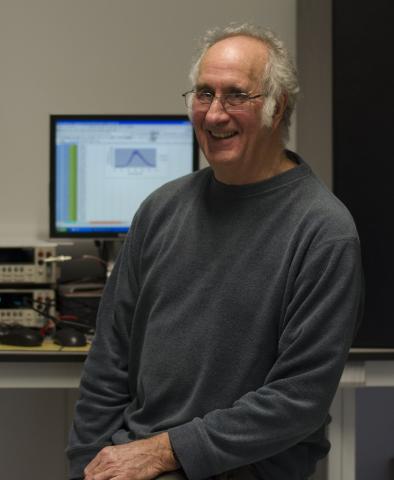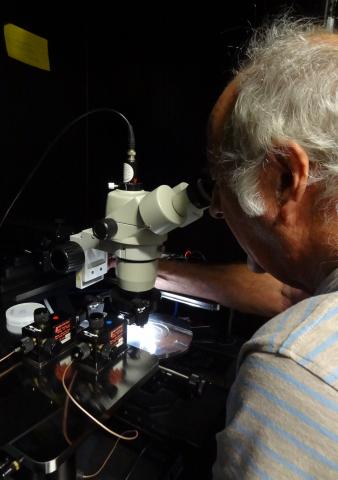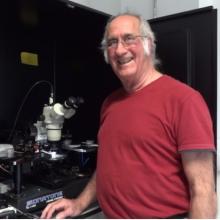Ted talks about how he came to join the GaN group, what he does here and his thoughts on the importance of GaN in the future.
Download Ted's researcher profile as a PDF
How did you join the Cambridge Centre for Gallium Nitride?

My association with the embryonic Cambridge Centre for GaN began around 16 years ago when, as chief scientist for the equipment manufacturer, Thomas Swan, I arranged the donation of, the group’s first MOCVD reactor. In return it was agreed that Thomas Swan would have access to the machine for 25% of the time to pursue research relevant to reactor development and to showcase these to potential customers. This was a symbiotic relationship in that Cambridge University received a free reactor underpinned by existing growth expertise, whilst Thomas Swan had access to a machine operating within a well-founded material characterisation laboratory (XRD, TEM, AFM, PL etc.), which it had no hope of establishing by itself. In marketing terms it was significant that Cambridge had such a strong international scientific reputation and logistically it was convenient, in that Cambridge was Thomas Swan’s local university. After commissioning the reactor I used it, on a shared basis, growing proving structures for customers, or in support of Thomas Swan’s commitments to various collaborative research projects (in which the Cambridge GaN group also participated). During one of these I supervised a PhD student, employed by Thomas Swan under a Marie Curie scheme, who was based primarily in the Cambridge GaN group. Following my redundancy in 2006 I have worked two days a week as a Post-Doctoral Research Associate, continuing with the range of measurements previously undertaken by that student in support of several device focused projects running within the group.
What is your role within the GaN group?
I assess LED devices fabricated from structures grown within the group, using a variety of optical and electrical characterisation techniques. Most of these employ computer driven scans of either voltage or current and in the case of optical output measurements synchronised light collection. The measurements are made as a function of device structure, geometry, drive current and temperature and are used in conjunction with electroluminescence spectroscopy in an attempt to understand the underlying physics of performance limiting phenomena.
I would also like to think that I retain a sufficient contact with MOCVD growth to be able to contribute to discussions on that topic.
What do you like best about working in the group?
When I first started work I spent most of my time in the lab doing practical work. With increasing seniority my lab time was progressively squeezed by activities deemed more corporately important. Now, some half century later, I find that I can again spend most of my time in the lab again, which is good.
I value being part of a strong, cosmopolitan, and predominantly young group as this persuades me that I am still in touch with those working at the cutting edge.
 Where do you see gallium nitride in the future?
Where do you see gallium nitride in the future?
Nitrides have already made substantial inroads into the commercial white lighting market, a process which will undoubtedly continue as the costs of manufacture are driven down and superior performance (higher high drive efficiency, better colour rendering index etc.) is achieved.
In the medium term an increasing penetration of the high frequency power electronics sector by GaN based High Electron Mobility Transistors (HEMTs) can be expected. Such devices would make a large impact in commercially important areas such as mobile communication, radar, electric traction etc.
Looking further ahead (albeit through more speculative and perhaps rose tinted, spectacles) there is the possibility that, with Moore’s Law becoming increasingly difficult to enforce, GaN based structures might challenge silicon and CMOS in the race for enhanced computer performance. There are already a number of reports of nitride based quantum-dot single photon sources, which can operate in the “easy cryogenic regime”, which with further development might be persuaded to function at room temperature. Such devices are possible building blocks for qubit- gate logic which in principle allows massively parallel processing and concomitant high speed performance. Whilst it is acknowledged that the development of devices and algorithms necessary for building a quantum computer are extremely challenging, success in that area could have a profound economic and societal impact.



